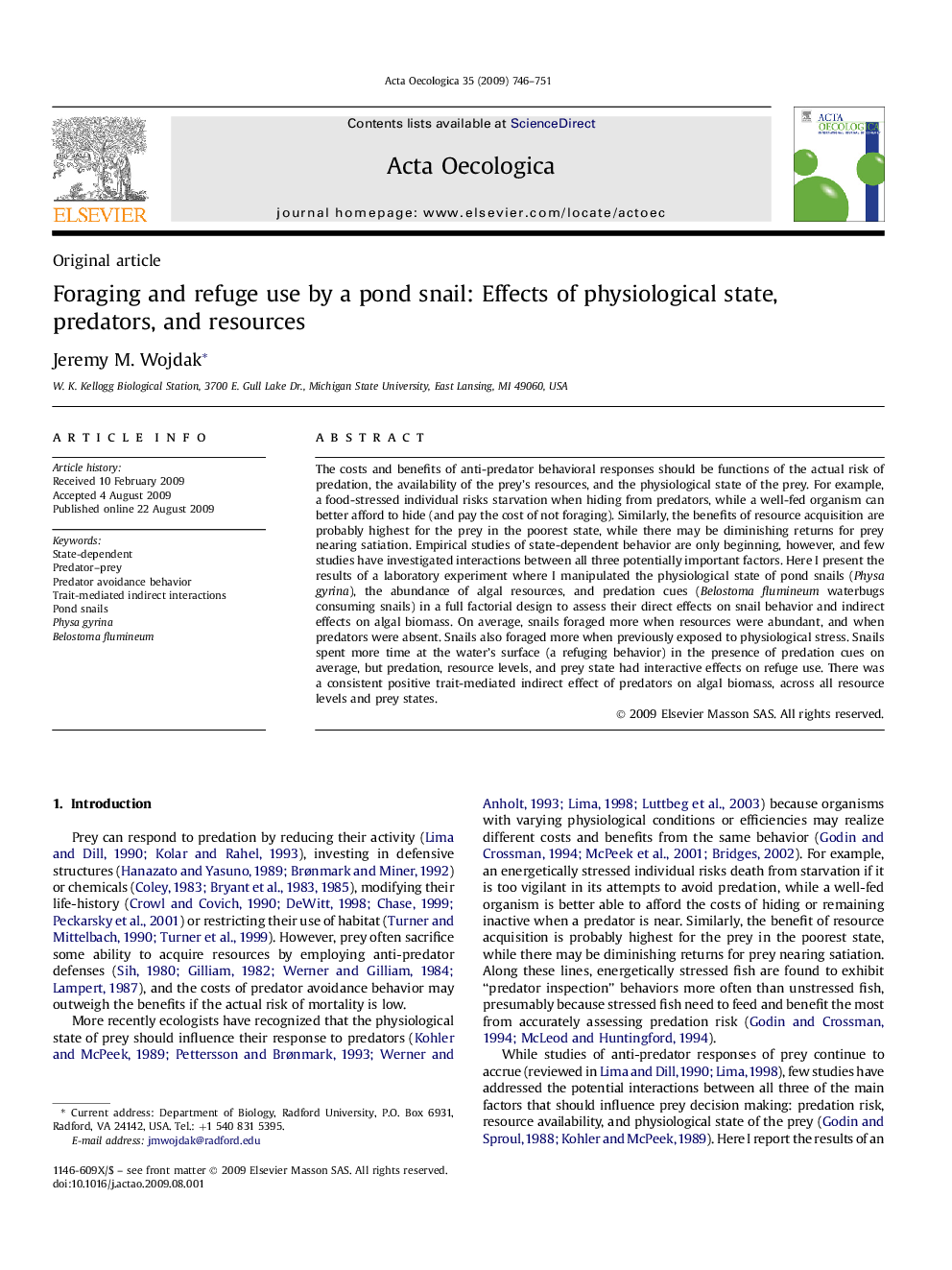| کد مقاله | کد نشریه | سال انتشار | مقاله انگلیسی | نسخه تمام متن |
|---|---|---|---|---|
| 4381444 | 1304071 | 2009 | 6 صفحه PDF | دانلود رایگان |

The costs and benefits of anti-predator behavioral responses should be functions of the actual risk of predation, the availability of the prey's resources, and the physiological state of the prey. For example, a food-stressed individual risks starvation when hiding from predators, while a well-fed organism can better afford to hide (and pay the cost of not foraging). Similarly, the benefits of resource acquisition are probably highest for the prey in the poorest state, while there may be diminishing returns for prey nearing satiation. Empirical studies of state-dependent behavior are only beginning, however, and few studies have investigated interactions between all three potentially important factors. Here I present the results of a laboratory experiment where I manipulated the physiological state of pond snails (Physa gyrina), the abundance of algal resources, and predation cues (Belostoma flumineum waterbugs consuming snails) in a full factorial design to assess their direct effects on snail behavior and indirect effects on algal biomass. On average, snails foraged more when resources were abundant, and when predators were absent. Snails also foraged more when previously exposed to physiological stress. Snails spent more time at the water's surface (a refuging behavior) in the presence of predation cues on average, but predation, resource levels, and prey state had interactive effects on refuge use. There was a consistent positive trait-mediated indirect effect of predators on algal biomass, across all resource levels and prey states.
Journal: Acta Oecologica - Volume 35, Issue 5, September–October 2009, Pages 746–751